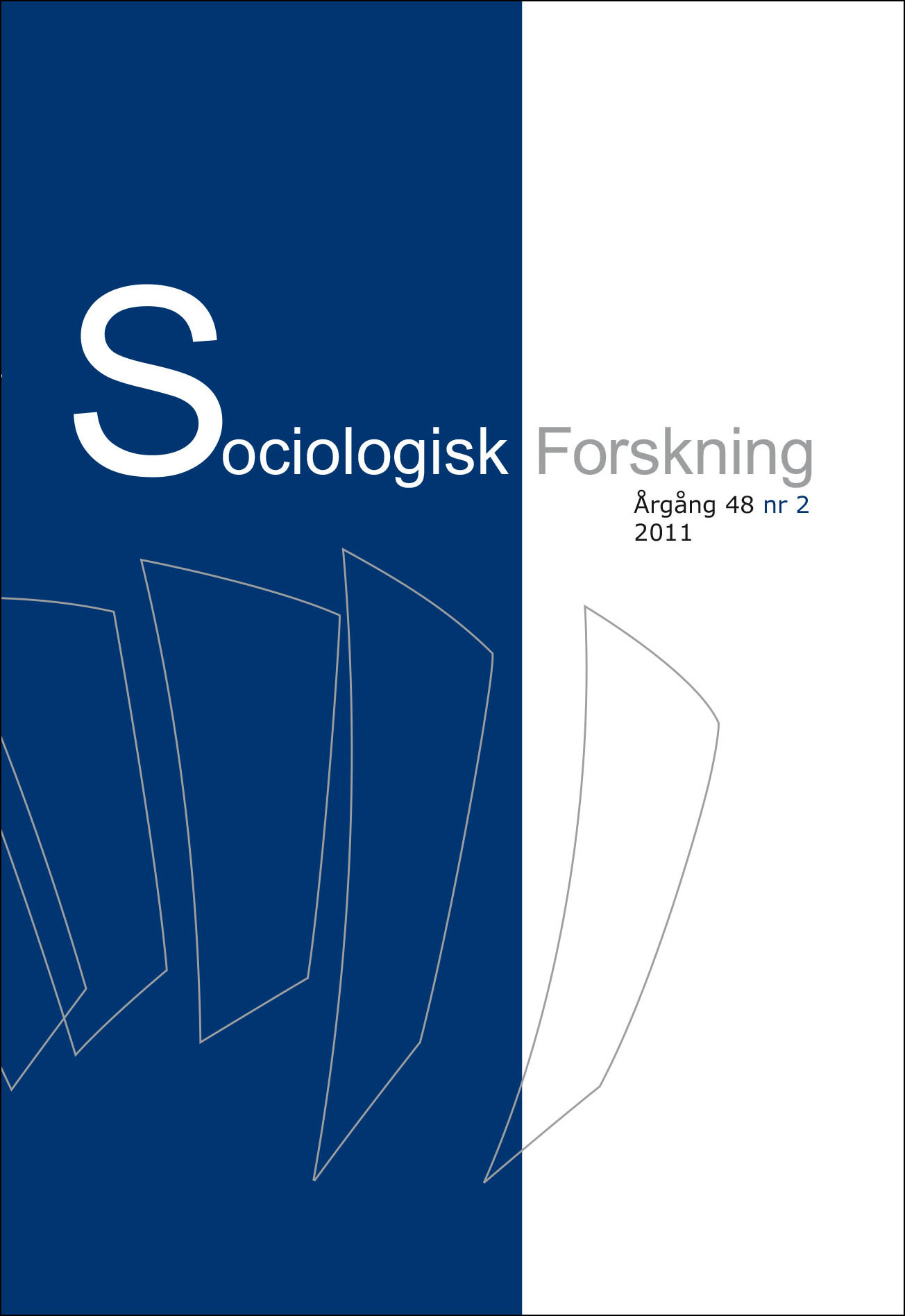Konsekvenser av rollövertagandet
”I”, ”me” och individualiteten
DOI:
https://doi.org/10.37062/sf.48.18424Keywords:
role taking, the ”I” and the ”me”, temporal and spatial distance, dualism – dialectic, subject and objectAbstract
Consequences of role taking: the ”I”, the ”me” and individuality
This paper analyzes the tendency of taking the ”I” and the ”me” in G. H. Meads theory of role taking as two separate, qualitatively different parts of human personality, the ”I” being of individual origin, the ”me” of social. In the original Meadian sense role taking gives rise to both the ”I” and the ”me”. They are dialectically united rather than dualistically separated aspects. They refer to the joint functional power of the subject, finding itself as an object, mediated by the Other. As a consequence, the link between body and the social world becomes theoretically more stringent, as the body is given its place as a cognitive social object among others, this by contrast to interpretations where the body is left as an object mainly outside the human social experience and as a source of agency sui generis, a conception which is in opposition to Meads.
The stress on the ”I”-phase, as related to body and concrete action in combination with its direct relation to the ”me”-phase, actualizes Mead as a forerunner in modern biologic/neurologic research on human perceptual, motivational and intentional capacity.Swedish Mead interpreters are critically analyzed. Interpretations of Charon, Giddens, Joas and Habermas are partly scrutinized.
The author defines the conceptual pair in terms of activity, subjectivity, temporal relativity and distance.
Downloads
Published
How to Cite
Issue
Section
License
All content in Sociologisk Forskning is published with immediate open access, under the Creative Commons license CC BY-NC-ND 4.0.
All content may be read, downloaded, shared and printed for non-commercial purposes, free and without fees. Contents may not be altered. When content is reused, author, source and a link to the copyright licence must be provided. The author retains copyright to their content. No publication fees are charged.





